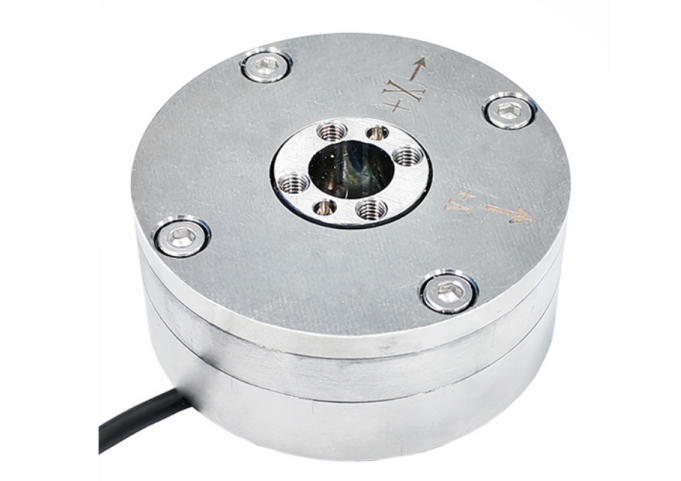Environmental sensors serve as the “senses” through which humanoid robots perceive their surroundings. Their core function is to accurately capture physical and chemical signals from the environment, converting them into electrical signals for analysis by the robot's system. This provides the basis for the robot's decision-making and action execution.
The primary types of environmental sensors include the following: First are temperature and humidity sensors, which monitor ambient temperature and relative humidity to adapt to indoor and outdoor operational scenarios, preventing robot malfunctions under extreme conditions. Next are gas sensors, used to detect harmful gases, combustible gases, or oxygen concentration, ensuring robot safety during operations in confined spaces or industrial environments while also assisting in assessing ambient air quality. Additionally, light/vision sensors capture ambient light intensity and image data to enable obstacle avoidance, scene recognition (e.g., indoor/outdoor transitions), and enhance the robot's visual perception of its surroundings. Finally, pressure/tactile sensors mounted on the robot's skin or contact points detect contact pressure and collision force, preventing damage during interactions with people or objects while aiding precise control of actions like grasping and walking.

As humanoid robot technology advances, demands for miniaturization intensify. Correspondingly, environmental sensors must adapt to the robot's compact internal structure and limb space, with sensor module dimensions typically ranging from a few millimeters to tens of millimeters. To align with robot battery power requirements and reduce energy consumption for extended runtime, environmental sensors must operate at standby power levels measured in microwatts to milliwatts. Additionally, sensors must exhibit robust interference resistance to withstand electromagnetic interference from internal motors and circuits, as well as mitigate the impact of vibration and friction generated during motion on detection accuracy.
Polyimide, with its core advantages of high-temperature resistance, flexibility, and environmental durability, has become a critical material for environmental sensors—particularly suited for humanoid robotics applications. It finds extensive and pivotal use in humanoid robot environmental sensors, with core applications spanning three key areas: structural support, protective encapsulation, and functional layer substrates.
· Dexterous fingertip tactile sensors: In dexterous fingertip designs, polyimide film can serve as a flexible substrate material. Laser engraving technology creates 3D porous graphene foam on the PI surface, forming a high-density tactile sensor array capable of pressure sensing accuracy ranging from 0.1N to 25N. Additionally, common-electrode and array electrodes are fabricated on the PI substrate via metal sputtering technology. Combined with a piezoresistive layer and silicone contact layer, this enables the fingertip to precisely identify surface textures and pressure distributions on objects.

· Bionic Tactile Skin Sensor: An array sensor based on PI substrate integrates pressure, temperature, and vibration sensing modules, covering the robot's palm and finger joints for a bionic tactile system that delivers full-coverage haptic feedback. Through distributed signal acquisition devices, tactile signals are fused in real time with visual and force data, enabling robots to accurately determine an object's physical properties. PI material's resistance to extreme temperatures and humid heat ensures stable operation in industrial workshop environments with oil contamination and dust.
· Medical Rehabilitation Robot Flexible Tactile Sensor: Combining PI material with carbon nanotube composites enables detection of minute pressure changes as low as 0.05N. Applied to bionic skin, it supports gentle patient care operations like massage and repositioning, assisting robots in helping disabled patients perform daily activities. The PI material passes medical-grade moisture and heat resistance testing. Its surface undergoes special treatment to minimize skin irritation, validated through animal trials. Each bionic skin module is independently replaceable, enabling rapid maintenance and functional upgrades while reducing medical equipment operating costs.
· Safety Interaction Sensor for Industrial Collaborative Robots: The PI substrate integrates a long-wave infrared photothermal detector that anticipates human thermal signatures. When workers approach the robot, it automatically triggers deceleration or stop mechanisms for safe human-robot collaboration. Simultaneously, a sensor array monitors contact force in real time. If pressure exceeds the set threshold, the robot immediately adjusts its motion trajectory to prevent collision injuries.
· Logistics Robot Joint Sensors: Polyimide material excels in logistics robot joint sensor applications due to its low friction coefficient and self-lubricating properties. Joints using PI bearings extend maintenance cycles from 600 to 2000 hours, reducing operational costs by 65%. Its lightweight design also lowers robot energy consumption and enhances dynamic response speed.

This is the first one.
Contact us to learn more about our advanced electronic chemicals and speciality polymer materials, and how they can enhance your production performances.